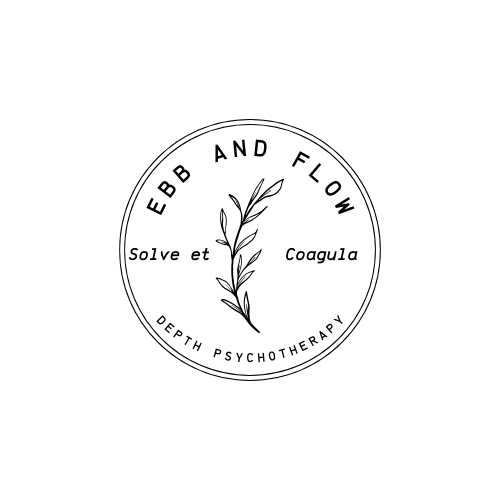Blog Layout
Healing & Wholing through Somatic Dreamwork
Michael Ebbinghaus • November 28, 2022
The Royal Relationship to the Unconscious

Freud called dreams the royal road to the unconscious. Before Freud, initiated indigenous peoples looked to dreams to tell them what their eyes could not see. They were appreciated as messages from the beyond, a source of incredible and intangible wisdom; gifts from the gods.
Today, very few of us have any appreciation for our dreams. They are never discussed in schools, oftentimes written off as purely random signals from REM sleep. Their imagery seems amiss to us, and due to our emphasis on the material aspects of our experience, dreams seem to make little sense. Even if we remember them, they seem to be confused about the basic laws of reality.
Or, perhaps, is it the other way around?
Carl Jung is famous for saying “He who looks outwards, dreams. He who looks inward, awakens.” There is a great deal of talk about awakening and dreaming in religious and spiritual circles. Awakening is glorified as rising out of the web of illusion, maya, the matrix, casting off the fluffy dream and coming into direct contact with reality. But when we start to investigate the fabric that dreams and consciousness are a part of, what precisely does it mean to dream and to be awake?
What are dreams, exactly? Where do they come from?
What do we know for sure about dreams? We know that we have them, and we begin to remember them as soon as we are able to remember. They are just as vivid and complex in childhood as they are in adulthood. Many of you no doubt remember certain dreams from your childhood that contain a certain mystique – perhaps they have always stuck with you but you don't know why. If you are unaccustomed to dreaming now, look to these dreams to begin to see the great wisdom at work and reignite your dream engine.
"Dreams present the working of your mind as such, unclouded by personal taste, predilection, and biases of your ego."
Why Should We Pay Attention to Our Dreams?
There are three dreams that I remember vividly prior to starting therapy at 24, at which point my dream life exploded. The dreams that I remember from this first half of my life, from ages 3-14, detailed the work I would have to do to heal, and what my mission was in the early part of my adulthood.
There are, of course, multiple interpretations. The beauty of dreams is their symbolic and timeless nature. As we move forward, new messages and synchronicities will emerge from the world of dreams, both those in our past and those lying in wait behind some unforeseeable corner. The very nature of symbols is their ability to serve as vertices of fractal meaning, a fancy way to say living. But this is our very nature, to aggrandize the mundane! The interconnected web of meaning becomes viscerally apparent the more one pays attention to their dreams, as well as the many mysterious tendrils of life flowing through all vectors of the Kosmos.
This is one way to look at dreams, as something that shows us where our work is. In terms of what we call “shadow work” these days, dreamwork is the whole banana wagon. I think this is a useful, although limited, perspective of what dreams are. Yes, they show us where our blind spots are.
Go underneath.
How is it that they do this?
Dreams present the working of your mind as such, unclouded by personal taste, predilection, and biases of your ego. Your dream presents Truths to you, the Truth of how it is that you live, and the self-perpetuating nature of both your personal and our collective problems. It is your mind freed from the constraints of your ego, showing you the constraints the ego puts upon it. Here the repressive barrier has fallen asleep! All elements of the unconscious are welcome on this ethereal stage.
"[Dreaming] is not just a creation of the mind, its perpetual wanderings and closures – it is also the force of evolution and consciousness as we know it."
The dream weaver is masterful, articulate, and bizarre. The more peculiar the happening, the more that it should demand our attention and respect. We are in contact with this intelligence from the moment of our conception. In fact, we are It, this image-making aspect of the psyche, and much more. From whence have the dreams of all mankind come? What did they look like in our very early ancestors, those many quivering and furred things? How has dreaming fueled evolution? It is not just a creation of the mind, its perpetual wanderings and closures – it is also the force of evolution and consciousness as we know it.
The store of knowledge and perspective that comes with deepening into our dream state is incredible. Dreams are woven by the same wisdom which remembers the dreams that you have; that wisdom is thine and thou. To establish a relationship to your dreams is to establish connection with a part of yourself that is grand and transcendent. It gives the unconscious a voice, precisely because it is done through the spirit of play.
Buddhist Interpretations of Dreams & Dream Yoga
Dreams sit at a different level of consciousness. Because they are in the unconscious, they manifest some form of our habitual tendencies and our deep-laid schemas. This is why the Buddhists do not concern themselves much with the content of dreams – they are simply the ways in which you fell out of knowledge with yourself, articulated
– and they are transformed through expanding awareness beyond the limited sense of self into union with the entire Kosmos. On the contemplative path, this entails deepening of awareness. One result of this is greater subject permanence – i.e. a subjective awareness is maintained into and beyond the dreaming state into deep dreamless sleep. It is learning to identify with the Witness.
When one “awakens” in the dream, one becomes master of the dream state, able to travel through many realms in the course of the night, accessing great wisdom and deepening one’s practice as an individual. Here all activities may be pursued without constraint, but not without ramification. What we pursue in the great freedom of the lucid dream landscape will have an impact on our waking awareness, something we should use to our full advantage.
When working with dreams, the lines between dreaming and living, asleep and awake start to blur. We are dreaming all the time. It is a more fundamental layer of our psyche, one that is mythologically oriented; it is in a different order of time and space. Dreams contain our personal myths we live out day-to-day, as well as the keys to our healing and integration. Our personal wholeness, fragmented in trauma, is restored, and our suprapersonal wholeness, the potential of who we could be, is expanded.
The Practice of Somatic Dreamwork
Dreams give you keys, but we must know how to use the technology of our body to work with them. The people, figures, animals, sentient beings, landscapes, even houses, when encountered in the dreamscape, are not random apparitions. They arise from energies that are part of the psyche as such. Our relationship to them: the degree to which we acknowledge them, our conscious attitudes towards them, how we have welcomed or disowned them, will influence how they appear. It is our nastiest nightmares that are in most need of love. Grand callings from the Self may appear transcendent or frightening, depending on our level of preparation and internal state.
I utilize several methods of working with dreams. The first is very akin to classic interpretation, particularly within the Jungian tradition, where dream figures are interpreted as fragmented aspects of the client’s personality, such as shadow, anima/animus, etc., and exploring what archetypal themes are present so as to know the client’s mythological trajectory, drawing upon our knowledge of patterns to navigate towards preferable outcomes. Our experience, after all, does tend to follow certain trends and motifs, and recognizing the well-trodden paths can help us to change from a tragic to heroic direction. The appearance of certain animals, characters, settings, and storylines - all symbols - can be valuable messages to the dreamer.
"Dreams give you keys, but we must know how to use the technology of our body to work with them."
Left on its own, interpretation misses a vital opportunity to come into direct relationship with dreams, a dynamic in sore need of reversal. When we take the role of the scientist or “objective observer” of our dreams, we inflict our traumas of abandonment and intimacy-inhibition, and miss fruitful opportunities for deep talks, great laughs, and recognition of the utter grandiosity, mediocrity, and absurdity of it all! It is why my other method of working with dreams is directly relational, and we do this through bioenergetics and active imagination, a process I refer to as Somatic Dreamwork.
Any autonomous entity encountered within the dreamscape can be found somewhere in the body, so there is much in common that this particular practice shares with bioenergetics. One need not have dreamt to engage in this type of work, but merely look to the presence of body signs. A body sign can be anything from a nausea that arises after an uncomfortable situation, a chronic pain – particularly those which involve chronic muscular tension – a strange feeling in your big toe – really it can be anything! They are signs of an unconscious energy wishing to be made conscious - the very reason for which they are now haranguing you.
I discuss body signs now as any figures that arise in your dreams will have a direct correlation to some source of flow-disruption in your body. When we close off from the fullness of ourselves, there is a kink in the energetic flow of awareness. When we disown certain elements of our personality, they split off and form their own clusters or complexes. The universal tendency towards self-organization dictates that these personality fragments will accrue energy over the lifetime of the individual, becoming their own semi-individual or subpersonality. Until they are accepted into the light of the individual’s awareness, they operate outside its scope, often in malicious and/or self-sabotaging ways. Once their inherent value is recognized and they are welcomed back into the personality, the powers of our split off fragments are able to aid us in our personal and transpersonal missions. Our wounded children, fiendishly devising ways to get their needs met, grow into cunning silver-tongues that help us to better negotiate reality. Pits of despair open up into achy-breaky poets, now a valley of deep feeling and creation.
But the landscape of the unconscious includes far more than these disowned archetypal elements, for within that same realm hidden beneath all the muck we did not want is the golden majesty we would sacrifice everything to attain. This is the Golden Shadow, the mysterious heights of our own potential. These can be felt through the body just as well, so body signs are both pains and blisses!
There are five principal channels
that body signs work through are:
- Physical sensation (tingling, warmth, cold, nausea, pain, tightness, etc.)
- Movement/locomotion
- Sound/breath
- Words/thoughts
- Visions/images
It is through working through these various channels that body signs, and the dream figures that lead us to them, may be worked with.
The relational process of dreamwork – what I refer to as somatic dreamwork – is an amalgam between Carl Jung’s active imagination and bioenergetics. I also wish to thank Arnold Mindell and Bill Plotkin for their relational style, whose foundations uphold the structure of my own work. As we said before, this process can occur independently from dreams – we need only recognize the body sign. But dream figures lead us to very particular energies and particular complexes or subpersonalities. Cut off psychic energies take personified forms – they are personality fragments that turn into fragmented personalities, i.e. personalities that are cut off from the love of our awareness as well as the balance from other aspects of the personality (this also makes our own psychic organization, in some ways, unstable, or off balance).
When you have an encounter with a dream entity, whether it is a house or building, creature, or person, call that entity into your awareness. See it as it was witnessed in the dream. Close down the eyes, breathe deeply, fully, and slowly. Enter the space of sleep without falling asleep. Breathe into the image. What are you feeling now in relationship to this figure? What sensations arise in the body? Breathe into these. Start to shift them through the other channels. What is this particular figure asking for? What do they embody? Mimic any movement they made, or speak to yourself as they spoke to you. Allow their presence into your body – this is the work of the alchemists. Conscious and unconscious are coming together, the disparate opposites finding colluded truth and connection.
Through engaging the various channels and having a multi-dimensional conversation with the energies that present themselves in the form of dream figures and body signs, we integrate into a larger whole. We claim broader portions of our identity: personal, ancestral, organismal, planetary, and Kosmic, which bring with them more and more capacity for energy and creation.
Sign Up for my Somatic DreamWork-Shop
Jan. 12th, 2023
Work with me in depth psychotherapy.
Share
Tweet
Share
Mail
The Sentient Soul


